#environmental stewardship
Text
Things to Do that Aren't Related to Growing Plants
This is my second post in a series I’ll be making on how to increase biodiversity on a budget! I’m not an expert--just an enthusiast--but I hope something you find here helps!
Some of us just don’t have much luck when it comes to growing plants. Some of us simply want to aim for other ways to help that don’t involve putting on gardening gloves. Maybe you've already got a garden, but you want to do more. No problem! There’s a couple of options you can look into that’ll help attract wildlife in your area without even having to bring out any shovels!
Provide a Water Source
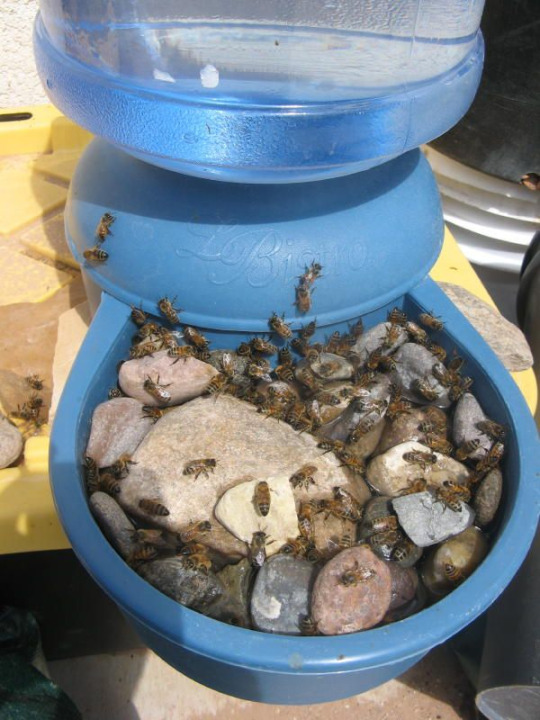
Oftentimes when I see ‘add a water source’ in informational articles about improving your backyard for wildlife, it’s almost always followed by an image of a gorgeous backyard pond with a waterfall and rock lining that looks expensive to set up, difficult to maintain, and overall just… not feasible for me. Arguably, not feasible for a lot of people. And that’s okay! There’s still ways to add water in your garden for all kinds of creatures to enjoy!
There’s tons of ways to create watering stations for insects like bees and butterflies. A self refilling dog bowl can work wonders! Add some stones into the receiving tray for insects to land on or use to climb out, and you’ve got a wonderful drinking spot for all kinds of insects! You can also fill a saucer or other dish with small stones and fill it, though it’ll likely need refilling daily or even several times a day during hot times.
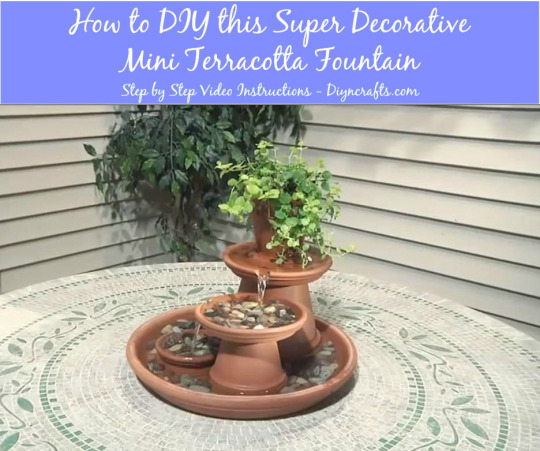
I've seen people online use all kinds of things to make water features. Some go with terra-cotta pots, pebbles, and a cheap pump to get a small and simple fountain. Others use old tires, clay, and a hole in the ground to create an in-ground mini pond system. If all else fails, even a bucket or watertight box with a few plants in it can do the trick--though do be wary of mosquitoes if the water isn’t moving. In situations like these, a solar-powered fountain pump or bubbler are great for keeping the water moving while still making it a drinking option for wildlife (it not even more appealing for some)--and these items can be obtained fairly cheap online!

Bird baths are an option as well--a classic way to provide for birds in your area, they can be easy to find online or in a gardening store! The only downside is that a good, quality bird bath can be pricey up-front. However, a nice stone bird bath should last a long time, be easy to clean and refill, and be enjoyed by many birds! I’ve also seen tutorials on how to make your own with quickcrete! Bird baths will be a welcome sight to birds, as they provide a space for them to drink and bathe to regulate the oils in their feathers for flight and insulation. Putting a stone in the middle will also help insects to escape if they fall in, and provide a place to perch so they can get their own drink. You’ll want to change the water and clean the baths regularly--as often as once a week, if you can manage it.
If possible, it’s highly encouraged to fill and refill water features with rainwater instead of tap water. Tap water is often treated, so instead of using hoses or indoor kitchen water, collecting some rainwater is a great alternative. Collecting rainwater can be as simple as leaving cups, bins, or pots outside for awhile.
Butterflies and other creatures will also drink from mud puddles. If you can maintain an area of damp soil mixed with a small amount of salt or wood ash, this can be fantastic for them! Some plants also excel at storing water within their leaves and flowers (bromeliads come to mind), making them an excellent habitat for amphibians as well as a drinking spot for insects and birds.
Bird Feeders and Bird Houses

Some of the fancy, decorated bird feeders are expensive, but others can be pretty low-cost--I got my bird feeder from Lowe’s for around 10 dollars, and a big bag of birdseed was around another 10 dollars and has lasted several refills! If you don’t mind occasionally buying more birdseed, a single birdfeeder can do a lot to attract and support local birds! If you’re handy, have some spare wood, and have or can borrow some tools, you may even be able to find instructions online to make your own feeder. You may not even need wood to do so! Even hummingbird feeders, I’ve found, are quick to attract them, as long as you keep them stocked up on fresh sugar water in the spring and summer!
An important note with bird feeders is that you have to make sure you can clean them regularly. Otherwise, they may become a vector for disease, and we want to avoid causing harm whenever possible. Also keep an ear out and track if there’s known outbreaks of bird diseases in your area. If local birding societies and scientists are advising you take your birdfeeders down for awhile, by all means, do it!

Bird houses are naturally paired with bird feeders as biodiversity promoters for backyard spaces, and it makes sense. Having bird houses suited to birds in your area promotes them to breed, raise their young, disperse seeds, and generally engage in your surrounding environment. Setting them up takes careful selection or construction, preparation, and some patience, but sooner or later you might get some little homemakers! Keep in mind, you will need to clean your birdhouses at least once a year (if not once per brood) to make sure they’re ready and safe for birds year after year--you wouldn’t want to promote disease and parasites, after all. But they could be a valuable option for your landscape, whether you purchase one or construct your own!
Again, do make sure you're putting up the right kind of boxes for the right kinds of birds. Bluebird boxes are some I see sold most commonly, but in my area I believe they're not even all that common--a nesting box for cardinals or chickadees would be far more likely to see success here! And some birds don't even nest in boxes--robins and some other birds are more likely to use a nesting shelf, instead! Research what birds live in your area, take note of any you see around already, and pick a few target species to make homes for!
Solitary Bee Houses

A bee house or bee hotel is a fantastic way to support the solitary bees in your area! For a few dollars and some annual cleaning, you can buy a solitary bee house from most big box nurseries. Alternatively, you can make one at home, with an array of materials you may already have lying around! You can even make them so that they’ll benefit all kinds of insects, and not necessarily just bees.
Though you don’t even necessarily have to break out the hammer and nails, buy a ton of bricks, or borrow a staple gun. Making homes for tunneling bees can be as simple as drilling holes in a log and erecting it, or drilling holes in stumps and dead trees on your property. You might even attract some woodpeckers by doing this!
Providing Nesting Area
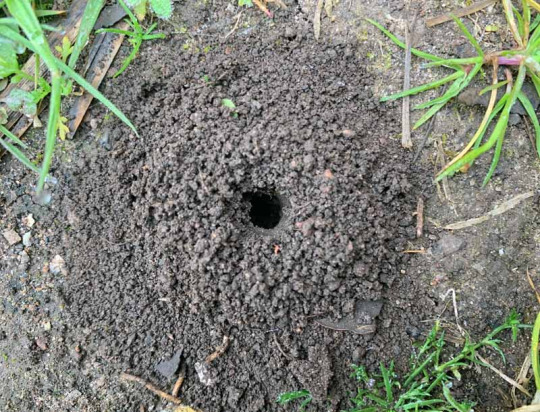
There are tons of different kinds of bees, and they all make different kinds of homes for themselves. Not all of them make big cavity hives like honey bees, or will utilize a solitary bee house. Bumblebees live in social hives underground, particularly in abandoned holes made by rodents--some others nest in abandoned bird nests, or cavities like hollow logs, spaces between rocks, compost piles, or unoccupied birdhouses. Borer, Ground, and Miner bees dig into bare, dry soil to create their nests. Sparsely-vegetated patches of soil in well-drained areas are great places to find them making their nests, so providing a similar habitat somewhere in the garden can encourage them to come! I do talk later in this document about mulching bare soil in a garden--however, leaving soil in sunny areas and south-facing slopes bare provides optimal ground nesting habitat. Some species prefer to nest at the base of plants, or loose sandy soil, or smooth-packed and flat bare ground. They’ve also been known to take advantage of soil piles, knocked over tree roots, wheel ruts in farm roads, baseball diamonds and golf course sand traps. You can create nesting ground by digging ditches or creating nesting mounds in well-drained, open, sunny areas with sandy or silty soil. However, artificially constructed ground nests may only have limited success.
Providing Alternative Pollinator Foods
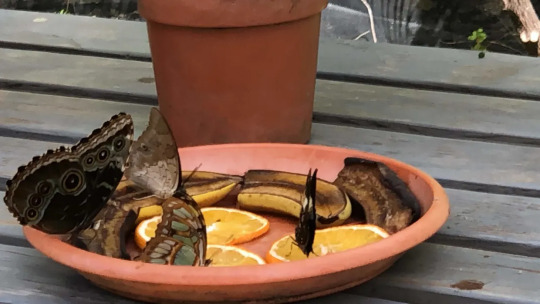
Nectar and pollen aren’t the only foods sought out by some pollinators! Some species of butterflies are known to flock to overripe fruit or honey water, so setting these out can be an excellent way to provide food to wildlife. You may want to be cautious about how you set these out, otherwise it can help other wildlife, like ants or raccoons. Butterflies may also drop by to visit a sponge in a dish of lightly salted water.
Bat Houses and Boxes
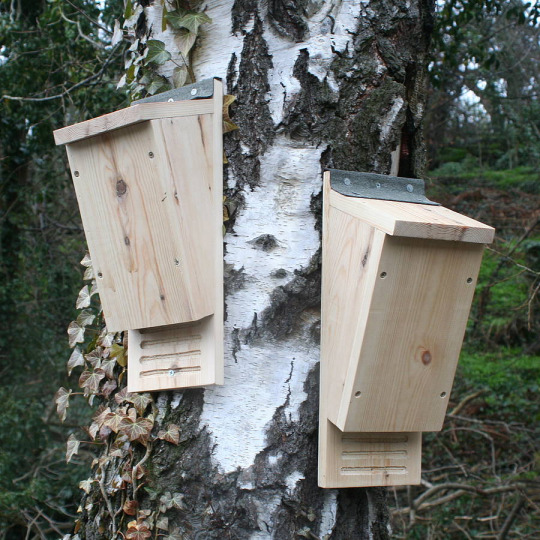
Big or small, whether they support five bats or five hundred, making bat boxes and supporting local bats is a great way to boost biodiversity! Not only will they eat mosquitoes and other pest species, but you may also be able to use the guano (bat droppings) as fertilizer! Do be careful if you choose to do that though--I’ve never had the opportunity to, so do some research into how strong it is and use it accordingly.
Provide Passageway Points
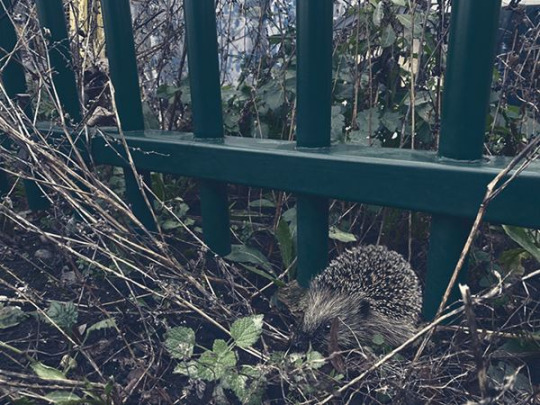
If you want your area to be more accessible for creatures that can’t fly or climb fences, allowing or creating access points can be an excellent way to give them a way in and out. Holes in the bottom of walls or fences can be sheltered with plants to allow animals through.
In a somewhat similar manner, if you’re adding a water fixture, it’s important to provide animals a way to get into and out of the pond--no way in, and they can’t use the water. No way out, and they may drown. Creating a naturalistic ramp out of wood beams or sticks, or stepped platforms out of bricks, stones, or logs can do the trick.
Get or Keep Logs and Brush Piles

I’ve already mentioned logs a good handful of times so far in this post. To be used as access ramps, or as nesting areas for solitary bees. But they have value as much more than that! Logs on the ground provide shelter for all kinds of animals, especially depending on size--anything from mice, reptiles, and amphibians to things like turkey vultures and bears will use fallen logs as shelter. Inside of a decaying log, there’s a lot of humidity, so amphibians are big fans of them--meanwhile, the upper sides of them can be used as sunning platforms by things like lizards. Other animals can also use the insides of logs as nest sites and hiding places from predators too big to fit inside. Fungi, spiders, beetles, termites, ants, grubs, worms, snails, slugs, and likely much more can be found inside rotting logs, using the rotting wood as food sources or nesting places. They can then provide food for mammals, amphibians, reptiles, and birds. They can also be regarded as a landmark or territory marker as wildlife get more familiar with your space.
So how do you get logs for cheap? Try Chip Drop! I talk about them more in a future post, but you can mark saying that you’d like logs in your drop, so they’ll give you any they have! In fact, you may even get a drop faster if you're willing to accept some logs. You may also be able to approach arborists you see working in your area and ask for logs. There may also be local online listings for people selling logs for cheap, or just trying to get rid of them. If there’s land development going on near you, you may be able to snag logs from trees they cut down to make space. Do keep in mind, you don’t need to have huge gigantic logs laying around your property to make an impact--even small logs can help a lot.

If possible, creating and leaving brush piles on the edge of your property can be a great boost to biodiversity--even if you may not see the wildlife using it. They’ll provide shelter from weather and predators, and lower portions are cool and shady for creatures to avoid the hot sun. The upper layers can be used as perch sites and nest sites for song birds, while lower layers are resting sites for amphibians and reptiles, and escape sites for many mammals. As the material decays, they also attract insects, and as such they’ll attract insect-eating animals too. As more small animals find refuse in your brush pile, their predators will be attracted to them as well. Owls, hawks, foxes, and coyotes are known to visit brush piles to hunt. Making a brush pile can be as simple as piling branches and leaves into a mound, as big or as small as you want. You can even use tree stumps or old fence posts near the base, and keep stacking on plant trimmings and fallen branches. Do note that you don’t want to do this near anything like a fire pit.
Don't forget, with all of these, your mileage may vary for any variation of reasons, so don't worry if you can't take all of even any of these actions! Even just talking about them with other people may inspire someone else to put out a bat box, or leave a few logs out for wildlife!
That's the end of this post! My next post is gonna be about ways to get seeds and plants as cheaply as possible. For now, I hope this advice helps! Feel free to reply with any questions, success stories, or anything you think I may have forgotten to add in!
#biodiversity#solarpunk#environmental stewardship#gardening#outdoor gardening#(i know this is literally the Dont Gotta Garden post but these could also be excellent additions to a preexisting garden so)#ani rambles#out of queue#the biodiversity saga#here in the tags to once again emphasize your mileage may vary with all of these#my mom is scared of bats theres no way in hell shes gonna let me put up a bat box#but I have been able to put out a shallow bird bath and a little solarpowered hummingbird bath fountain#do what you can! every bit counts! You may be able to do something that I or your neighbors can't!#for example my nextdoor neighbors have literally no trees in their backyard where the hell would they put a bat box#meanwhile i have trees in my backyard but still can't put up a bat box. maybe the neighbors next to me could!#similarly brush piles are a no go for my family but someone somewhere else could set one up!#i am rambling in the tags now uh long story short do what you can don't stress about what you can't
4K notes
·
View notes
Text

It is a blessing to be the color of the earth; do you know how often flowers confuse me for home? —rupi kaur
27 notes
·
View notes
Text
The Philosophy of Abundance
The philosophy of abundance is a perspective or worldview that emphasizes the inherent richness, generosity, and potential for growth and fulfillment in the world. It contrasts with scarcity mentality, which focuses on limitations, competition, and the belief that resources are finite and insufficient for everyone's needs. The philosophy of abundance encompasses various principles and beliefs that shape attitudes, behaviors, and perceptions towards life, prosperity, and well-being. Here are some key aspects of the philosophy of abundance:
Gratitude and Appreciation: The philosophy of abundance encourages individuals to cultivate gratitude and appreciation for the abundance already present in their lives, including relationships, experiences, opportunities, and resources. By focusing on what one has rather than what is lacking, individuals can experience greater satisfaction and fulfillment.
Positive Mindset: Adopting a positive mindset is central to the philosophy of abundance. It involves cultivating optimism, hope, and belief in one's ability to create and attract abundance in various areas of life, such as wealth, health, relationships, and personal growth. Positive thinking can lead to increased resilience, motivation, and creativity in overcoming challenges and pursuing goals.
Abundance Mentality: Abundance mentality is the belief that there is more than enough to go around for everyone, and that success and prosperity are not zero-sum games. It entails embracing a mindset of abundance in which opportunities, resources, and possibilities are plentiful and accessible to those who seek them. This mindset fosters collaboration, generosity, and a willingness to share and support others in their pursuits.
Law of Attraction: The philosophy of abundance is often associated with the law of attraction, which posits that individuals can attract positive or negative experiences into their lives based on their thoughts, beliefs, and intentions. By focusing on abundance and visualizing desired outcomes, individuals can purportedly manifest their dreams and goals more effectively.
Generosity and Sharing: Embracing abundance involves being generous and open-handed with one's time, energy, talents, and resources. Acts of kindness, compassion, and generosity contribute to the circulation of abundance in the world and create a ripple effect of positive impact on others. Giving without expecting anything in return fosters a sense of interconnectedness and abundance consciousness.
Growth Mindset: The philosophy of abundance encourages a growth mindset, characterized by a belief in the capacity for learning, development, and improvement over time. Embracing challenges, seeking opportunities for growth, and embracing failure as a stepping stone to success are key aspects of a growth-oriented approach to life.
Environmental Stewardship: Abundance philosophy extends to the natural world, emphasizing the importance of environmental stewardship, sustainability, and responsible use of resources. Recognizing the Earth's abundant natural resources and biodiversity, individuals are called to protect and preserve the planet for future generations.
Overall, the philosophy of abundance promotes a mindset of abundance, gratitude, generosity, and possibility, inviting individuals to embrace the richness and potential inherent in every aspect of life.
#philosophy#epistemology#knowledge#learning#chatgpt#education#ethics#Gratitude#Positive mindset#Abundance mentality#Law of attraction#Generosity#Growth mindset#Environmental stewardship#Prosperity consciousness#Well-being#Personal development#abundance#economic theory#economics
10 notes
·
View notes
Text
One way to stop seeing trees, or rivers, or hills, only as "natural resources," is to class them as fellow beings-- kinfolk.
I guess I'm trying to subjectify the universe, because look where objectifying it has gotten us. To subjectify is not necessarily to co-opt, colonize, exploit. Rather it may involve a great reach outward of the mind and imagination.
What tools have we got to help us make that reach?
-- Ursula K. Le Guin, Deep in Admiration (2014)
#ursula k le guin#quote#environmentalism#environmental stewardship#hugely giving yarrow and theo if im being fr#triton saying
1 note
·
View note
Text
Sustainable Living: Embracing the Cosmic Journey to a Thriving Planet
🌍 Join us on a cosmic journey toward a thriving planet! 🚀✨ Discover the power of sustainable living and its profound impact on our environment. From eco-friendly practices to renewable energy, green architecture, sustainable agriculture, circular economy, conservation efforts, corporate sustainability, and more, we explore practical tips and innovative solutions to create a positive cosmic impact. Let's nurture our planet for future generations! 🌱🌎 #SustainableLiving #RenewableEnergy #GreenArchitecture #CircularEconomy #Conservation #CorporateSustainability #CosmicImpact
Together, we can make a difference and create a world where harmony and sustainability prevail. 🌟✨ #ThriveWithSustainability #PositiveCosmicChange
In a cosmic journey toward a sustainable future, we explore the transformative power of sustainable living and its profound impact on our planet. From eco-friendly practices to renewable energy and conscious consumption, we embark on a mission to nurture our planet for future generations. Join us as we delve into practical tips, inspiring stories, and innovative solutions that empower…

View On WordPress
#biodiversity#circular economy#climate change#conscious consumption#conservation#corporate sustainability#eco-friendly practices#education#environmental stewardship#green architecture#renewable energy#sustainable agriculture#sustainable communities#sustainable living
2 notes
·
View notes
Text
Unleash Your Inner Explorer: Dive into Biodiversity with the iNaturalist App
Are you ready to embark on a thrilling journey through Saskatoon and Area’s rich tapestry of wildlife and natural wonders? The Saskatoon and area City Nature Challenge is back, and this year, we’re inviting you to join us in an exhilarating adventure of discovery and conservation!
iNaturalist Observation with smart phone connecting with nature, supporting vital conservation research…
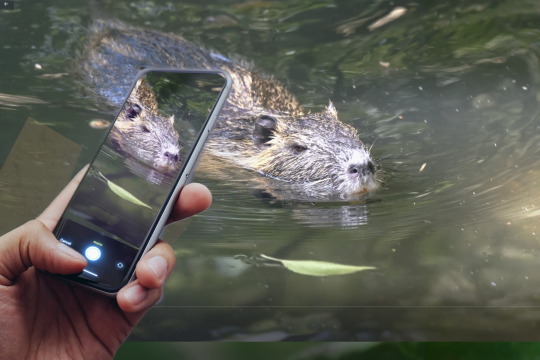
View On WordPress
#adventure#biodiversity#Biodiversity Conservation#biodiversity monitoring#biodiversity recording#celebration#Citizen Science#City Nature Challenge#community#Community Engagement#Community Participation#conservation#Conservationists#discovery#diversity#Ecological Awareness#Ecosystem#empowerment#environmental advocacy#Environmental Education#environmental stewardship#exploration#Field Ants#George Genereux Urban REgional Park#global initiative#iNaturalist app#Mayflies#Mound Ants#natural wonders#Nature
0 notes
Text
Traditional Uses of Pine Resin in Indigenous Cultures
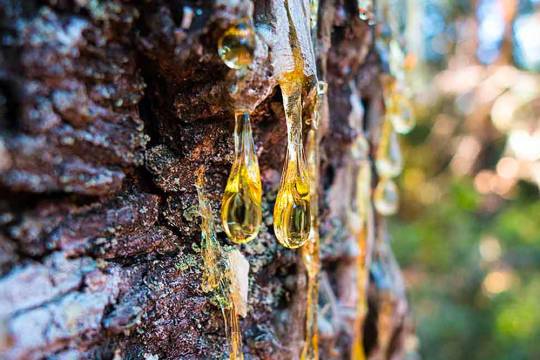
Pine resin has played a significant role in the cultural and practical traditions of indigenous communities around the world for centuries. Its versatile properties have made it invaluable in various aspects of daily life and cultural practices.
Medicinal Applications: In many indigenous cultures, pine resin has been used for its medicinal properties. It has been applied topically to treat wounds, burns, and skin infections due to its antiseptic and anti-inflammatory properties. Additionally, pine resin has been used in traditional remedies for respiratory ailments and as a natural adhesive for securing bandages.
Ceremonial Practices: Pine Resin holds spiritual significance in many indigenous cultures and is often used in ceremonial rituals and offerings. It may be burned as incense during ceremonies to purify the air and create a sacred atmosphere. The aromatic smoke of burning pine resin is believed to carry prayers and intentions to the spirits, fostering connection and harmony with the natural world.
Craftsmanship and Artistry: Pine resin has long been used as a natural adhesive in indigenous craftsmanship and artistry. It is used to bond materials together in the construction of tools, weapons, and traditional dwellings. Pine resin-based adhesives have also been used in the creation of art objects, such as sculptures, pottery, and textiles, adding strength and durability to the finished pieces.
Preservation and Waterproofing: Indigenous cultures have employed pine resin for its preservative and waterproofing properties. It is applied to wooden implements, baskets, and containers to protect them from moisture, decay, and insect damage. Pine resin coatings help extend the lifespan of these items, ensuring their longevity and usability for generations to come.
Food and Beverage Preservation: Pine resin has been used in indigenous food preservation techniques to seal containers and inhibit spoilage. It is applied to the seams of vessels such as clay pots and gourds to create a watertight seal, preventing the entry of air and microbes that can cause food to spoil. Pine resin coatings also impart a subtle flavor and aroma to stored foods and beverages.
Get More Insights On This Topic: Pine resin
#Pine Resin#Indigenous Cultures#Traditional Medicine#Natural Adhesive#Cultural Practices#Sustainability#Craftsmanship#Environmental Stewardship
0 notes
Text
Calling for widespread climate education as a critical step in the fight against climate change.

This year, organizers of Earth Day are calling for widespread climate education as a critical step in the fight against climate change.
A new report, released in time for global attention for Earth Day on April 22, highlights the impact of climate education on promoting behaviour change in the next generation.
Despite people’s deep connection to their local environment — whether it’s blackouts in Toronto caused by raccoons, communities gearing up for a total solar eclipse lasting only minutes, chasing northern lights or hundreds of Manitoba kids excited about ice fishing — there remains inertia in climate action.
Sparking global momentum and energy in young people can go a long way to addressing climate change now and in the near future, says Bryce Coon, author of the report and Earth Day’s director of education.
#Climate educatoon#young people#climate change#climate action#climate crisis#earth day#22 april#environmental stewardship
0 notes
Text
EPR Registration: A Crucial Step in Battery Waste Management
Extended Producer Responsibility (EPR) is a cornerstone of sustainable waste management, especially for battery disposal. Understanding the importance of EPR registration for battery waste management for both environmental responsibility and complying with regulations.
What is EPR Registration?
EPR Registration stands as a cornerstone in environmental legislation frameworks worldwide. It mandates that producers bear responsibility for the entire lifecycle of their products, including their disposal. Specifically concerning batteries, EPR Registration ensures that manufacturers or importers take responsibility for the collection, recycling, and proper disposal of used batteries.
The Importance of EPR Registration in Battery Waste Management
Environmental Conservation: EPR Registration significantly reduces the environmental footprint of battery disposal by promoting proper recycling practices. This aids in preventing soil and water contamination from hazardous battery components like lead and cadmium.
Resource Conservation: By facilitating the recycling of valuable materials such as lithium, cobalt, and nickel from used batteries, EPR Registration contributes to resource conservation and minimizes the need for raw material extraction.
Compliance and Accountability: EPR Registration imposes legal obligations on producers, fostering accountability for their products' end-of-life management. This ensures adherence to regulatory standards and promotes a culture of corporate responsibility.
Navigating the EPR Registration Process
Research and Preparation: Begin by researching the specific EPR regulations governing battery waste management in your jurisdiction. This includes understanding registration requirements, documentation, and deadlines.
Completion of Registration Forms: Fill out the requisite registration forms accurately, providing comprehensive information about your company, its products, and anticipated waste management procedures. Attention to detail is key to ensuring a smooth registration process.
Submission and Review: Submit your completed registration forms to the relevant regulatory body responsible for overseeing EPR compliance. Be prepared for a thorough review process, during which your compliance with regulatory standards will be assessed.
Compliance Maintenance: Upon successful registration, maintain ongoing compliance with EPR regulations by fulfilling your obligations regarding battery collection, recycling, and reporting. Regular audits may be conducted to ensure continued adherence to regulatory standards.
Conclusion
EPR registration is a critical mechanism for sustainable battery waste management. It holds producers responsible for their products' lifecycle, including disposal and recycling. This promotes environmental conservation, resource efficiency, and adherence to regulations. By embracing EPR principles, we can tackle battery waste challenges and move towards a circular economy.
#Battery recycling#EPR registration#Environmental stewardship#Battery disposal regulations#Eco-friendly practices#Environmental legislation#Green technology#Sustainable development#Waste management programs
1 note
·
View note
Text

#psychic#deer symbolism#spiritual significance#personal growth#environmental stewardship#inner peace
0 notes
Text
Of Midnight Oil and Modern Marvels: Jade's Fuel-Filled Odyssey
In the quiet hours of the night, beneath the fluorescent glow of the gas station canopy, my story intertwines with the hum of the American heartland. As a nocturnal guardian of the pumps during my college years, I shared whispers and laughter with the ghosts of Route 66, all while my heart pledged allegiance to the noble colors of Royal Dutch Shell. “Wij zijn meer dan vrienden, we zijn familie,”…

View On WordPress
#50 State Smog Legal#7/11 Killeen#Adventure Rider#Alternative Fuel Advocate#Amazon AWS#American Heartland#Animal Welfare#Biodiesel#Bodega Florida#California Chevron#California eGirl#Catalyst Converter#Chevron#Circle K#Cloudflare#Community Service#Convenience Store Culture#Corgi Companion#Cross-Country Riding#Cybernetic Future#Diesel Alternatives#Digital Nomad#Eco-Friendly#eGirl#eGirl4Rent#Electric Vehicles#Energy Sector#Energy Transition#Entertainment Industry#Environmental Stewardship
0 notes
Text
Un-Actions, or Restriction of Activities
This is my first post in a series I’ll be making on how to increase biodiversity on a budget! I’m not an expert--just an enthusiast--but I hope something you find here helps!
There’s a good handful of ways you can help increase biodiversity in your yard that don’t require buying things--in fact, these may actually help you save money in the long run! They may seem small and simple, but every bit counts! Whether you can do these in totality, or just limit how often you do these actions, it’ll make a difference.
Not Mowing, or Mowing Less Often

Turf grass lawns are considered a monoculture, meaning they don’t provide much opportunity for insects to find habitat--so few other creatures find them enjoyable either. An expanse of turf grass is, in many ways, a barren wasteland in the eyes of wildlife--too exposed to cross, with few to no opportunities for food or shelter, leaving them exposed to blazing hot sun, freezing cold, or any predators that may be lurking nearby. A place to be avoided. The simple act of letting your grass grow unbothered gives a chance for wildflowers to grow, and for your grass to grow taller--providing more habitat for insects, which then provides more habitat to birds and other creatures that feed on said insects. Wildlife want nothing more than to skirt by unnoticed, so even leaving the grass tall along the edges of a fence or yard can help a little. Even restricting mowing to every other week, or at a higher blade setting, can be a huge help. If HOAs or city ordinances are fussy about lawn length in the front yard, you can likely still keep grass higher in the backyard. Or, you can create a ‘feature’ where grass is allowed to grow long in a specific area. If it looks purposeful, people are more likely to accept it. Not mowing under trees or close to shrubs not only leaves space for wildflowers to grow, but also means you don’t have to deal with mowing over bumpy roots and other difficulties. Cutting different areas at different times can be an option for letting grass grow long in some areas while still having available places for play and entertainment. I’ve seen some people plant flower bulbs when pulling up weeds, so in the future they'll bloom in early spring before mowing is usually necessary. This could be another fun way of adding biodiversity to a lawn without--or before you--begin mowing in spring.
Not worrying about mowing, or doing it less often, saves you in time, money, and energy. You won’t have to buy as much gasoline for your mower, and Saturday afternoons can be free to be enjoyed in other ways aside from being sticky and sweaty and covered in grass stains. In addition, you’ll likely be lowering your own carbon emissions!
If you do have to mow your lawn, I’ve got ways you can use your grass clippings to boost biodiversity later in the post series!
Not using pesticides, herbicides, fungicides, etc.
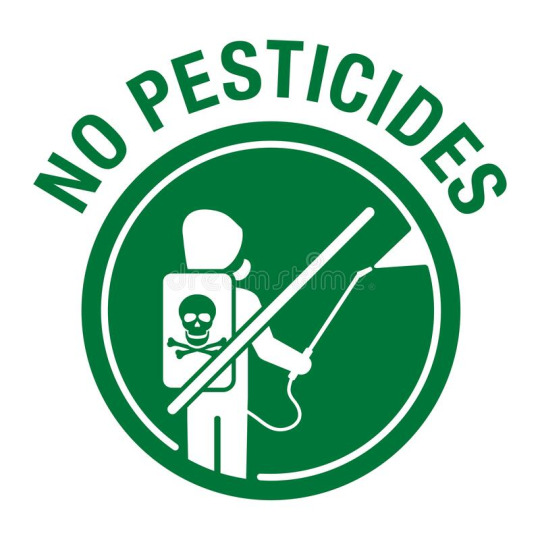
One of the next-biggest non-actions you can do asides from not mowing is using fewer fewer to no herbicides, fungicides, and pesticides in your yard. This’ll easily allow for more biodiversity. Allowing more insects and a wide array of plants to thrive will feed back into the entire food chain in your area. In addition, these types of chemicals have been tied to algae blooms, death of beneficial insects, harm to birds, fish, and even humans. Soil is supposed to be full of fungi, especially fungal mycelium that essentially acts as a network for plants to communicate, share nutrients, and support each other--fungicide kills that, and typically makes all other lawn problems even worse in a negative feedback loop. It may take awhile to see the benefits of avoiding these chemicals, but once you see it, it really is astounding.
However! I can’t lie and say that there haven’t been points where I needed to use pesticides at some points in my gardening journey. In these cases, try to use products that are organic--like diatomaceous earth, neem oil, etc--and use them accurately, correctly, and sparingly. Follow instructions on how to apply them safely and responsibly--for example, on non-windy days and during times when bees and other pollinators aren’t likely to be out and about. With some pests (read: oleander aphids, in my experience), a simple jetstream of water is enough to force them off the plant where they’ll be too weak to get back. Eventually, you should have a balanced enough ecosystem that no one insect pest causes a major issue with the work you’re doing to boost biodiversity.
If you can bear to, try handling pests manually. Squishing pest bugs in your hand is a pretty foolproof way to get rid of some problems, or spraying them with a mix of soap and water can do the trick on some insects. Alternatively, picking them off your plants and into a bucket of soapy water is also a valid option. You’ve heard of baptism by fire, now get ready for… baptism by soap?
But also! Try reconsidering what you consider a pest! Tomato hornworms are hated by gardeners, for devouring the foliage of beloved tomato, pepper, and potato plants. But killing the tomato and tobacco hornworm means getting rid of sphinx moths, also known as hummingbird or hawk moths! Hawk moths are vital to the survival of many native plants, and are sometimes even the only species that pollinates them. If you can bear to, consider sacrificing a few tomato plants, or growing a few extras, so we can continue having these beautiful moths for years to come. After all, they may not even do significant damage to the plants!

With that in mind, be friendly to your natural pest managers! Lacewings, ladybugs, praying mantises, wasps, birds, bats, and more will help manage pest populations in your environment! Encourage them by planting things they like, providing habitat, and leaving them be to do their work! Avoiding pesticides helps make your garden a livable environment for them, too!
Letting Weeds Grow
Many of the plants we know as 'weeds' are actually secondary succession species and native wildflowers. Milkweed was regarded as a noxious, annoying weed for a long time, and now people are actively trying to plant them after learning about the important role they play in our environments! Weeds are adapted to take over areas that have been cleared out of other plants after a disaster, so they're doing much of the initial work in making a habitat for other creatures. In fact, many of them will simply die back as the environment repairs itself.
An important thing to note is to please make sure that your ‘weeds’ are not invasive species. Work on learning how to identify native and invasive species in your area, and pull out what’s harmful to leave room for what’s good!
Don’t Rake (Or At Least Don’t Bag Your Leaves)

Many insects overwinter in piles of leaves that we often rake away and bag up in the fall and winter. By doing this, we are actively throwing away the biodiversity of our neighborhoods! If you can, leave the leaves where they fall!
If you do need to rake, put the leaves in places wildlife can still access it instead of bagging it up. Move your leaves into garden beds to serve as mulch, or along the edge of fences to rest while keeping egg cases and hiding bugs intact and free to release come spring.
Leave Snags Where They Are
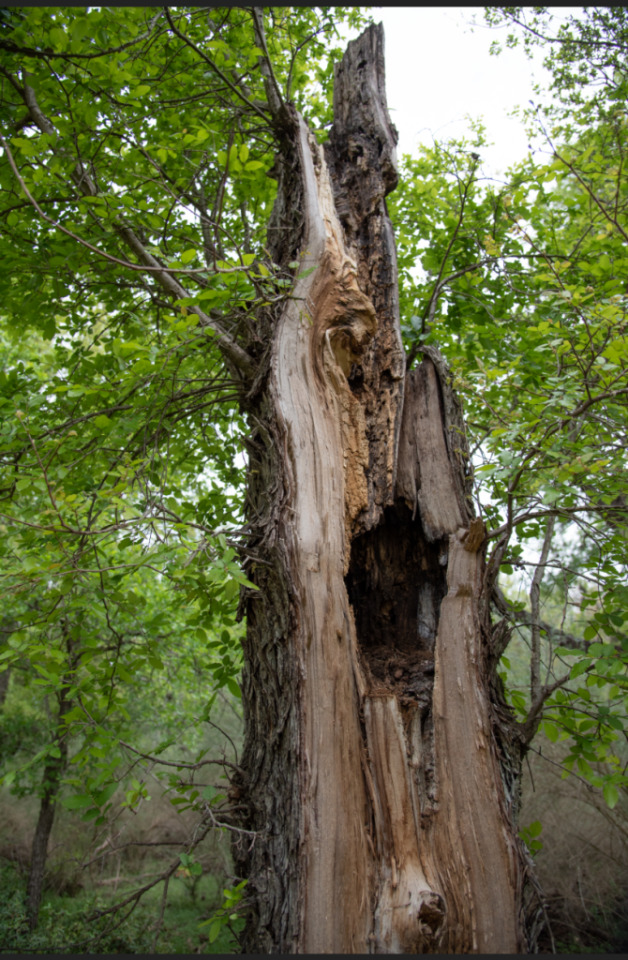
Snags are dead trees/dead branches on living trees. They provide an important wildlife habitat--many birds nest in them, or use them to seek cover from rain, and many insects will also live in snags (making them an additional food source for birds and other creatures). Tree cavities are used as nests by hundreds of bird species in the US, and many mammals use them as well, such as bats, squirrels, raccoons, and sometimes even bears. Some trees form cavities while they’re still alive, but in conifers they’re more likely to form after death. Crevices between the trunk of a dead tree and its peeling bark provide sun protection for bats and amphibians, and leafless branches make great perching areas for birds of prey to hunt from above. The decaying wood is home to insects and fungi, who then feed birds, mammals, amphibians, and reptiles. Do check on the snags regularly to ensure they don’t serve a threat to any nearby structures, but whenever possible, leave them be!
Keep Your Cat Inside
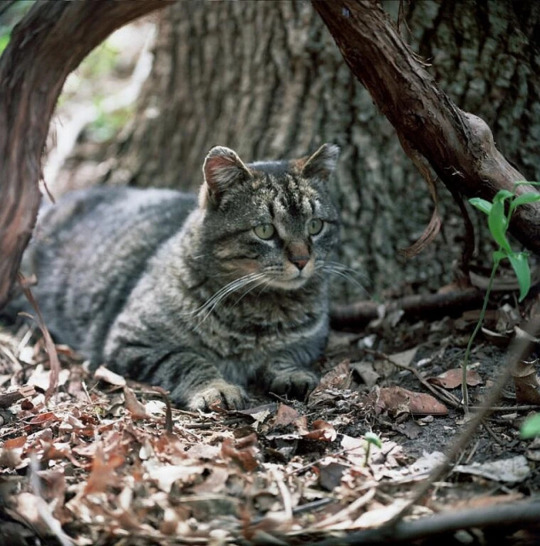
If you have an outdoor cat, consider making the adjustments to have it be an indoor cat. If you have an indoor cat, keep it as an indoor cat. Free ranging cats impact biodiversity through predation, fear effects, competition for resources, disease, and more. Keeping little Mittens inside does a lot more to help than it may seem from the outside.
That’s the end of this post! My next one’s gonna be on things you can add to your space that aren’t directly related to growing plants. For now, I hope this advice helps! Feel free to reply with any questions, success stories, or anything you think I may have forgotten to add in!
#biodiversity#solarpunk#gardening#outdoor gardening#lawn culture#anti lawn culture#environmental stewardship#(i think that counts)#ani rambles#out of queue#the biodiversity saga#I know I said this in the masterpost already but another reminder some people aren't in a position to do all or some or even any of this#i have so far been unsuccessful in convincing my parents to not mow or rake because we live in an HOA neighborhood#but do what you can/are able to! it'll help!
1K notes
·
View notes
Text
Witnessing Nature's Fury: Iceland Volcano Spews Lava in Eruption
Iceland, a land of stunning landscapes and geological wonders, has once again captured the world's attention with a spectacular display of nature's power. In recent days, a volcano in the Reykjanes Peninsula has erupted, sending plumes of ash and rivers of molten lava into the air. This event, while not unexpected in a country known for its volcanic activity, has mesmerized onlookers and sparked discussions about the dynamic forces shaping our planet. In this blog post, we delve into the eruption, its causes, and its significance.
On a chilly morning in Iceland, residents and visitors awoke to the rumblings of Fagradalsfjall, a volcano located approximately 30 kilometers southwest of the capital, Reykjavik. This awakening marked the first eruption in the area in over 800 years, igniting excitement and awe among those fortunate enough to witness it firsthand. The eruption initially began with a fissure opening on the volcano's slopes, unleashing a cascade of fiery lava that flowed gracefully down the mountainside.
As the eruption progressed, lava fountains illuminated the night sky, casting an otherworldly glow over the surrounding landscape. The lava, a molten testament to the Earth's inner turmoil, flowed steadily, carving new channels and reshaping the terrain with each passing hour. Spectators gathered from near and far, cameras in hand, to capture the spectacle and bear witness to the raw power of nature in motion.
The eruption of Fagradalsfjall, like many volcanic events, is rooted in the complex geological processes that shape the planet's surface. Iceland sits atop the Mid-Atlantic Ridge, a boundary where the Eurasian and North American tectonic plates meet and diverge. This geological hotspot is responsible for Iceland's volcanic activity, as magma from the Earth's mantle rises to the surface, creating new landmasses and reshaping the island over millennia.
In the case of the Fagradalsfjall eruption, experts believe that a combination of factors, including magma pressure and tectonic stress, contributed to the volcano's awakening. While volcanic activity in Iceland is not uncommon, the precise timing and location of eruptions remain unpredictable, underscoring the dynamic nature of the planet we call home.
Beyond its awe-inspiring beauty, the eruption of Fagradalsfjall holds scientific significance and offers valuable insights into the inner workings of our planet. Volcanic eruptions provide scientists with opportunities to study magma dynamics, gas emissions, and the interactions between geological processes and the environment. By monitoring and analyzing volcanic activity, researchers can better understand volcanic hazards and mitigate risks to human populations living in volcanic regions.
Furthermore, the eruption serves as a reminder of Iceland's geological heritage and its unique place in the natural world. For centuries, Icelanders have coexisted with volcanic activity, harnessing its energy for geothermal power and drawing inspiration from its rugged landscapes. The eruption of Fagradalsfjall serves as a testament to the resilience of both nature and humanity, highlighting our ability to adapt and thrive in the face of adversity.
The eruption of Fagradalsfjall stands as a testament to the awe-inspiring power of nature and the dynamic forces that shape our planet. From its humble beginnings as a fissure in the earth to its fiery crescendo of lava fountains and ash plumes, the eruption captivated the world and reminded us of the fragile balance between creation and destruction. As Icelanders and visitors alike gather to witness this geological spectacle, let us marvel at the wonders of the natural world and strive to protect and preserve the beauty that surrounds us.

1 note
·
View note
Text
Forest Bathing is For Everyone. And It's Not As Weird or Difficult as You Think
Looking for ways to improve your health and inner peace - as well as that of your kids? Opportunities are closer than you think. Go outside! #nature #wellbeing #innerpeace #healthychildren
You don’t need hiking boots and the Appalachian Trail to connect with nature. While those who do are at a mastery level of nature appreciation, most of us are not, and that’s perfectly fine. We meet nature where we are.
“Forest bathing” is simply going out into the forest or other wild or semi-wild places and communing with nature. By immersing yourself fully in nature, you can let go of…

View On WordPress
#environmental stewardship#Forest Bathing#Health benefits of nature#inner peace#Nature#Nature Healing#outdoor activities for kids#wellness
0 notes
Text
The Green Revolution: Eco-Friendly Cars and Their Benefits
Eco-friendly cars have emerged not just as a trend but as a necessity to combat environmental challenges and reduce our carbon footprint.
In the 21st century, the automotive industry has seen a significant shift towards sustainability, marking the advent of the green revolution. Eco-friendly cars have emerged not just as a trend but as a necessity to combat environmental challenges and reduce our carbon footprint. This comprehensive guide delves into the world of eco-friendly cars, highlighting their benefits, innovations, and the…

View On WordPress
#Advanced Aerodynamics#Affordable Electric Cars#Air Pollution Reduction#Automotive Innovation#autonomous driving#battery technology#Carbon Footprint Reduction#charging infrastructure#Chevrolet Bolt EV#Clean Energy#Clean Transportation Solutions#Eco-Conscious Consumers#Eco-Friendly Cars#Economic Benefits#electric vehicles#Environmental Impact#environmental stewardship#EV Tax Credits#Fuel Cell Electric Vehicles#Future Mobility Trends#Government Incentives#Green Automotive Technology#Green Revolution#Hybrid Electric Vehicles#Hydrogen Fueling#Hydrogen-Powered Vehicles#Hyundai Nexo#Instant Torque#Long-Term Savings#Luxury Electric Vehicles
0 notes
Text
Embracing Sustainability: A Necessity for Modern Businesses
Discover the crucial role of sustainability in the modern business landscape. Explore the necessity for businesses to embrace sustainable practices for long-term success and positive environmental impact.
#Sustainable Business Practices#Corporate Sustainability#Eco-Friendly Initiatives#Green Business Strategies#Environmental Impact#Sustainable Development#Responsible Business Operations#Climate-Friendly Practices#Sustainable Growth#Business Environmental Responsibility#Ethical Business Practices#Eco-Conscious Strategies#Sustainable Innovation#Green Business Solutions#Environmental Stewardship#Eco-Friendly Commerce#Socially Responsible Businesses#Sustainable Business Models#Circular Economy Practices#Ethical Corporate Initiatives
0 notes